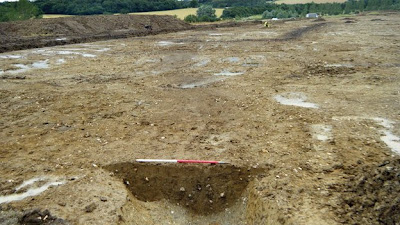Archaeologists are hoping to save ancient cave drawings from coastal erosion. Since the 5th century humans have been painting the walls of Wemyss Caves, creating a rich record of Scottish history over the past 1500 years.
 |
| One of the carvings in Sliding Cave [Credit: SCH@RP Blog] |
Money has been spent trying to slow the pace of coastal erosion but every year the ocean inches closer to swallowing the paintings.
Read the rest of this article...

